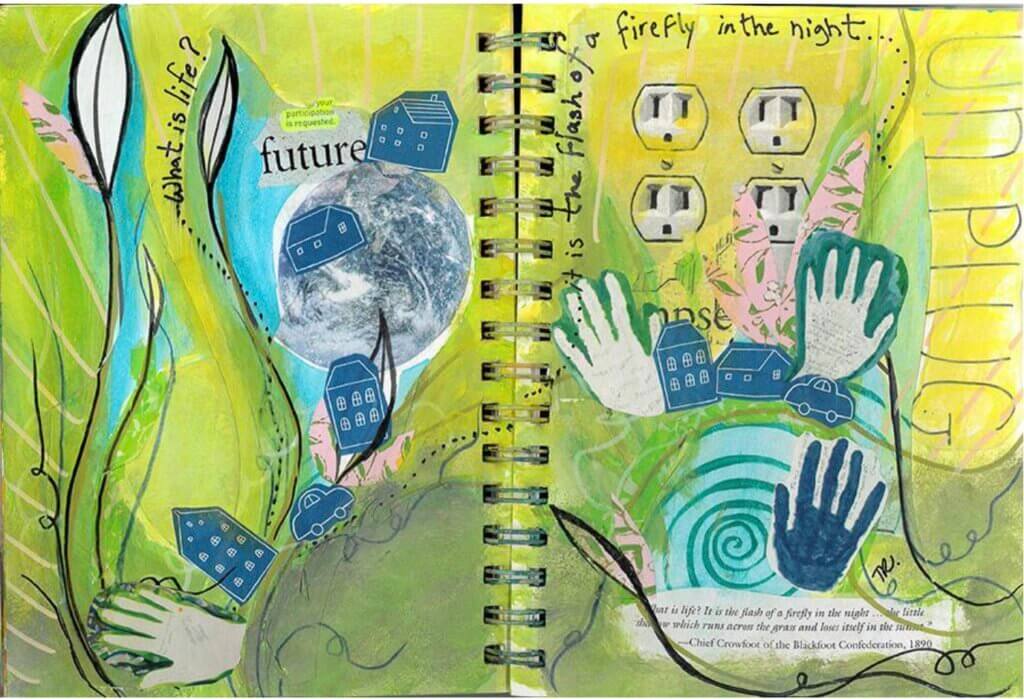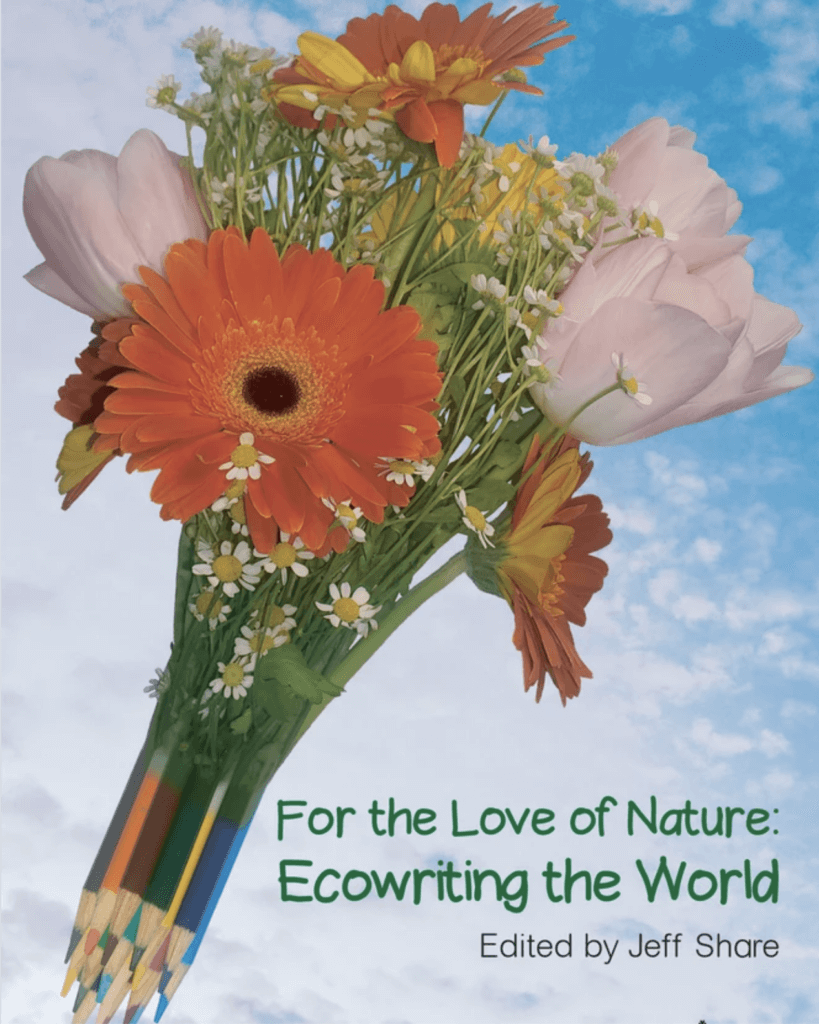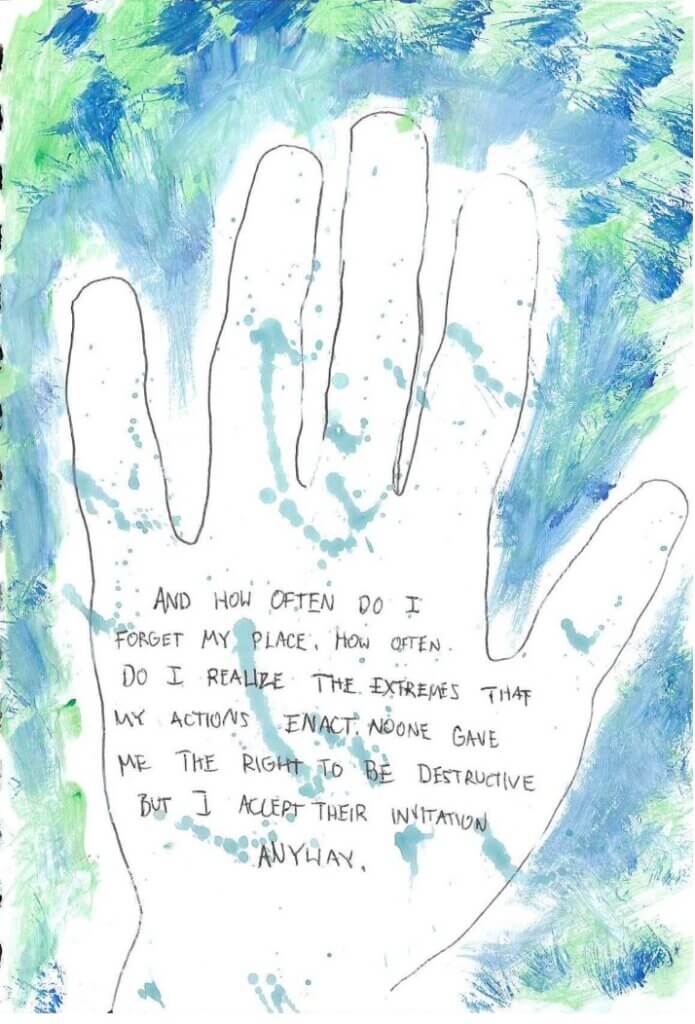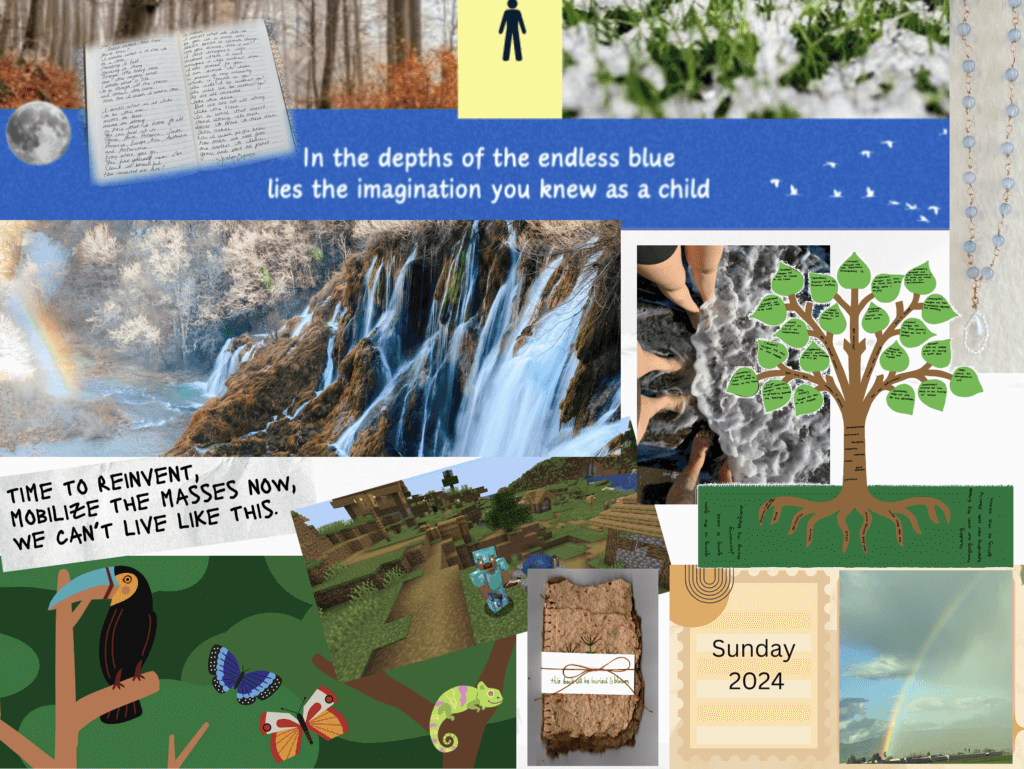
I am excited to share about a new book that I have been working on for the last three years. For the Love of Nature: Ecowriting the World is an edited edition that was inspired by the environmental justice class I teach undergraduates in the Department of Education at UCLA. This book contains a collection of ecowriting, writing that celebrates the power of connecting with the natural world through expressing ourselves in many varied forms. Developing our love of nature is an essential part of environmental literacy because we protect what we love.

This amazing assortment of essays, student writing, lesson plans, and resources is written by scholars from around the world who focus on the benefits of ecowriting. My original motivation to assemble these writings was sparked by a blog from Gavin Lamb. In his online environmental communication digest called Wild Ones, Gavin illuminates the magic of ecowriting, which has become the main project for my environmental justice class. I have been amazed by the excitement, creativity, and critical thinking my students have shown in creating their own ecowriting. Lamb’s ecowriting field guide is included in this book as one of the theoretical and practical contributions for teachers and students.
I am thrilled by the essays and poetry composed by authors, educators, and students from Australia to Rome and across the United States. From down under, Denise Chapman shares her poetry and passion in her essay about the power of storytelling. Denise writes about storying, homeplace, and the importance of setting, smells, and seeds for connecting us to land and community.
Continuing this reverence for storytelling and nature is Melissa Greene-Blye, who writes in the US from an Indigenous perspective and provides historical context about the ways colonization has shaped our current relationships with lands, waters, and each other. Melissa explains the importance of decolonizing our logic of domination and integrating a more reciprocal relationship with the natural world. We also explore the power of words and language to either limit our ability to imagine alternative possibilities or to open our minds to understand different worldviews and cosmovisions. Weaving the array of ideas of the book together is an insightful essay by author Rebecca Solnit, who writes about the importance of critical hope as we create new stories to spark the popular imagination.
The second part of the book is written for educators looking for ecowriting strategies and examples to bring into classrooms from kindergarten up through university. Pioneering Rome-based ecomedia literacy scholar Antonio López describes how he guides his students to create ecomedia video essays. His ideas pair well with the lessons from Peaches Hash and Theresa Redmond about visual journaling. More wonderful strategies for bringing ecowriting into TK–12 classrooms can be found in the essay by Cindy Jenson-Elliott about incorporating gardening and creating comic books. These are followed by essays, poems, short stories, and letters from students discussing their experiences and expressing their ideas about learning, teaching, and creating ecowriting. One essay is written by eight of my students who, during the pandemic, became peer teachers and designed and taught an ecowriting lesson to the rest of their class. In this essay the peer teachers describe their experience and encourage empowering students through peer teaching opportunities. The other student ecowritings provide a range of engaging examples for teachers to see possibilities and for students to consider multiple genre options from screenplays to digital poetry. (Click here to see a digital poem created by pre-service teachers in Germany.)

The final section of the book provides educators with a list of resources and two fully designed units with over a dozen lessons for teaching ecowriting and critical media literacy about environmental justice. The lessons are accompanied by active links to all the online materials needed to teach them. The first unit offers scaffolding and guidance to teach student-centered, culturally relevant, and developmentally appropriate lessons on ecowriting that integrate active exploration, photography, poetry, and numerous pedagogical strategies. In the second unit, authors Sydney Richmond and Andrea Gambino designed lessons to promote the teaching of critical thinking related to the media messages about the environment. They focus specifically on greenwashing and use the critical media literacy framework to lead students through critical analysis to alternative media production that challenges logical fallacies and misrepresentations. While these units contain many resources, the book also provides a thorough list of resources focused on teaching ecowriting that includes websites, books (for students and for educators), movies, short videos, songs, poetry, and podcasts.
I assembled this book as an attempt to do what The Home Planet, a giant coffee table book my parents had in their living room, did for me when I was growing up. With its spectacular photographs of the Earth taken from space and poetic writing from the astronauts and cosmonauts who had the privilege to travel into space and look back at our planet, it inspired me to care about our Earth. The photographers and writers of that book were moved by the “overview effect” that changed their ways of understanding the universe and valuing the fragility that is planet Earth. Since we cannot all travel to space to gain this deep appreciation, we need books like this and dedicated teachers to help our students gain this essential insight. We must guide our students to understand the interconnectedness of all things on this planet, to recognize the seriousness of the current climate crisis, to develop their biophilia (love of nature), and to write about the natural world as a step in the journey to the kind of collective action that is necessary to transform our world into a more sustainable, caring, and healthy planet for everyone.

Created by Jeff, this collage is a vibrant culmination of diverse ecowriting projects crafted by the students, featuring an array of short stories, poetry, Haiku, photography, drawings, digital picture books, diaries, letters, jewelry, clothing, and an innovative book designed with recycled paper and California native wildflower seeds, destined to bloom upon burial.


One Response
Hello, Tenstrands and Jeff Share,
Thank you for sharing the concept of Eco-writing and environmental media literacy. So exciting. So needed. Bravo!
As an educator, I’ve been using ecology as the basis for teaching Peace Literacy, neurobiology and collaboration. Here is a short video example. https://www.youtube.com/watch?v=DQXqT2J5kOk
I’ve also been making eco-writing drawings for 20 years and would like to put them in a book. They include many drawings from Bioneers conferences, Julia Butterfly Hill, Michael Meade and the words and imagery of Indigenous Leaders like Illiarian Merculieff and Pat McCabe. I would like to explore getting them published in a book that could be of use to Eco-writing students. I will send a pdf